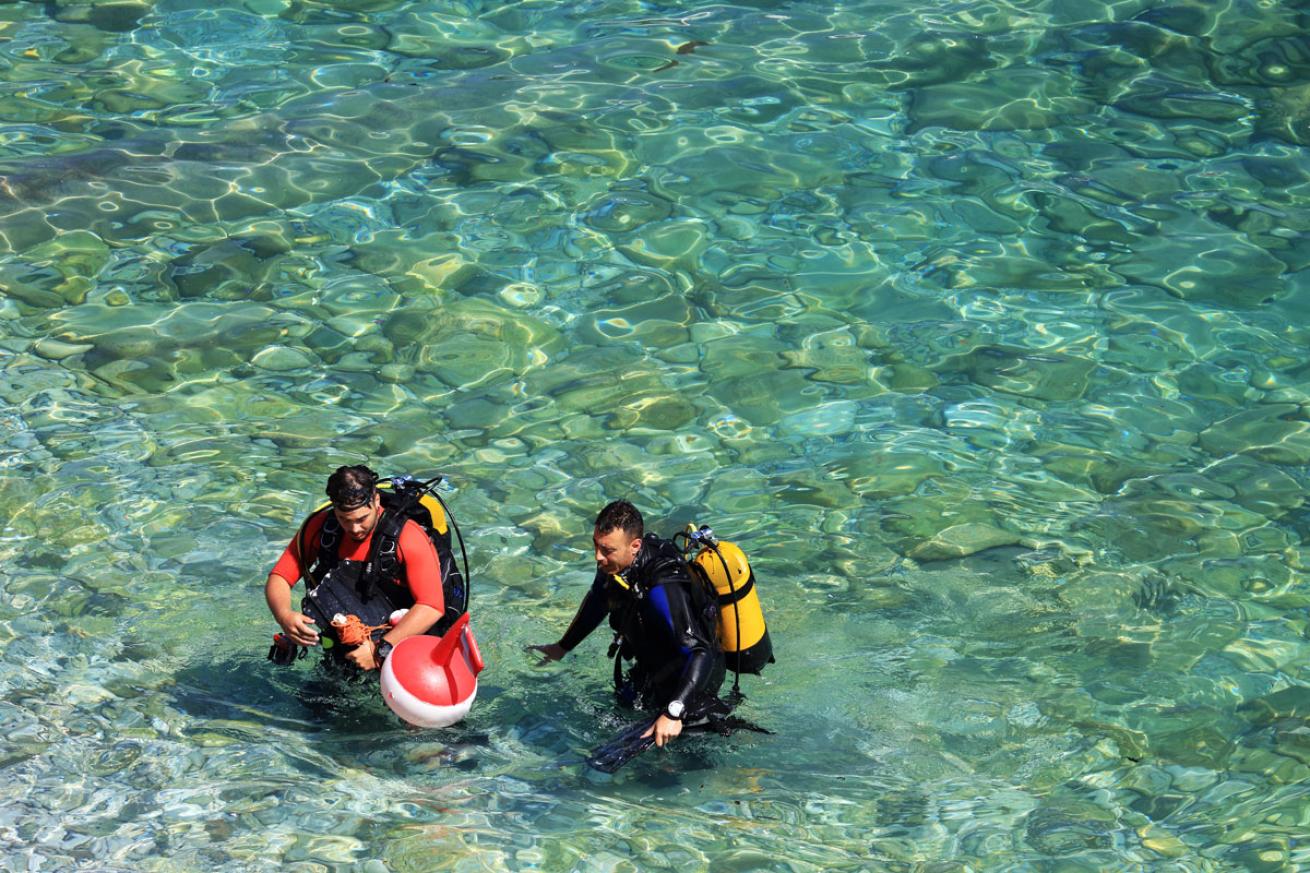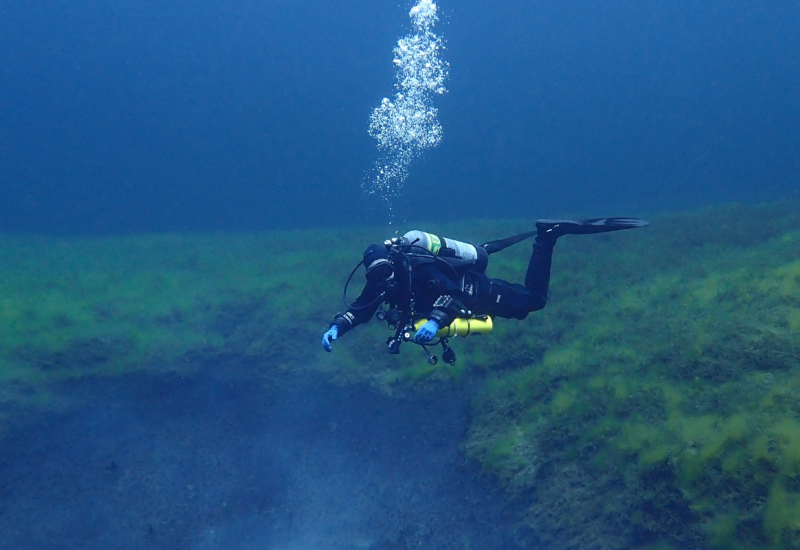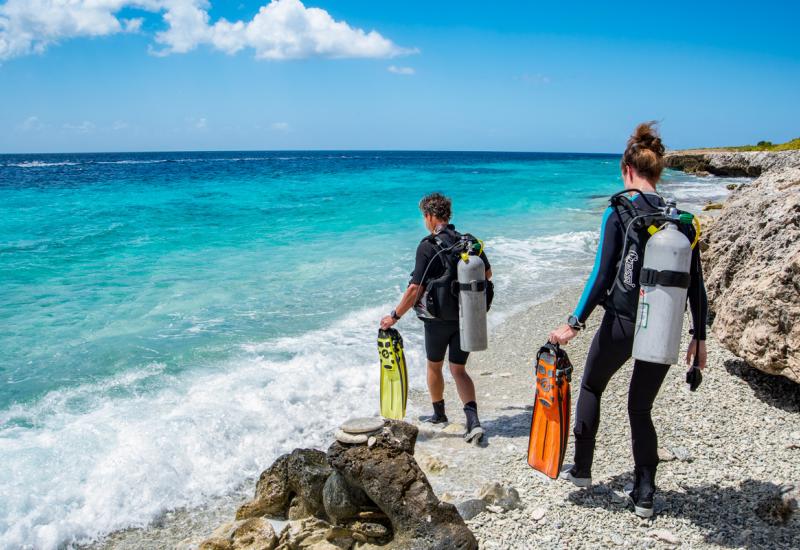Scuba Diving Tips: Easy Ways to Exit the Surf
Meticulous planning, pinpoint timing and the ability to crawl on your hands and knees — three career skills also required for surf exits.

ShutterstockLearn how to exit the surf during a shore dive.
STEP 1: Pause Outside the Surf Line
Approach the surf line cautiously, remembering that waves come in sets of several big ones followed by lulls of smaller ones, and that bigger waves break farther out. When you’ve found an appropriate spot outside the surf zone, be sure you’re buoyant and catch your breath. Float on your back and rest so you’ll be fresher for exerting as you exit. If you were swimming hard and need to breathe without your regulator or snorkel for a few minutes to catch your breath faster, conditions allowing do so, then go to your regulator before you continue your exit. If you’ve been swimming hard underwater and are winded, your snorkel may not deliver enough air until you’ve caught your breath.
Make sure your console is clipped in close so it doesn’t whack you while you are in the surf. Take some time to orient yourself. Are you sure you’ve found the place where you entered? If not, look hard for any unusual surf wash indicating rocks. Are the waves bigger now? Let a few sets pass so you can sense their rhythm. You want to go in on the declining phase of a set so that you’ll have the full lull to get onto the beach.
STEP 2: Kick Like Hell
When the moment of truth arrives, put your regulator in your mouth and air in your BC. Start kicking for the beach as you rise up the face of the wave. Unless waves are small, you don’t want to surf the wave. Instead, stay just behind the crest. Kick hard to stay as close to the breaking crest as long as possible without going over its top.
Once you’ve committed yourself, concentrate on getting through the surf zone and onto the beach as quickly as possible. Do not stop in the surf zone. Keep kicking until the wave stops and begins to recede. Resist the temptation to stand up prematurely even if the water is only knee-deep; the backwash can be surprisingly strong.
STEP 3: Hang on Like a Leech
With luck, by the time the wave begins to recede you’re in water shallow enough that you can dig into the sand with your fingers and sides of your fins and hold on until the backwash passes. If you’ve used up your luck, you’ll be sucked back into the next wave. If a tumble is inevitable, hold your mask and regulator in place, tuck your arms and legs into a ball and hold on. When it’s over, you’ll be farther up the beach and should be able to grab the sand this time.
STEP 4: Crawl Like a Man
Once in shallow, quiet water, you’ll be tempted to take off your mask and fins, stand up and walk out like a homo sapiens. Many have tried; a few have made it. Remember that you’re tired and top-heavy, you’re on bad footing, you can’t see holes and rocks under the water and the next set is coming.
if the surf is huge, you’re tired or not sure, crawl out, but in moderate to low surf, if you walked in you can walk out. In walk out conditions, you quickly take your fins off at about waist deep and then wade out quickly, watching the waves and bracing against them. More people get knocked over trying to walk in or out wearing fins (very slow and you can’t easily adjust your balance).
If you choose to stand, make sure you are in waist-deep water, stand with feet spread and knees slightly bent to absorb the force of backwash or an incoming wave, then shuffle backwards to shore. If you have a surface float, keep it between you and the shore as you exit. Again, do not remove any equipment until you are safely ashore.










